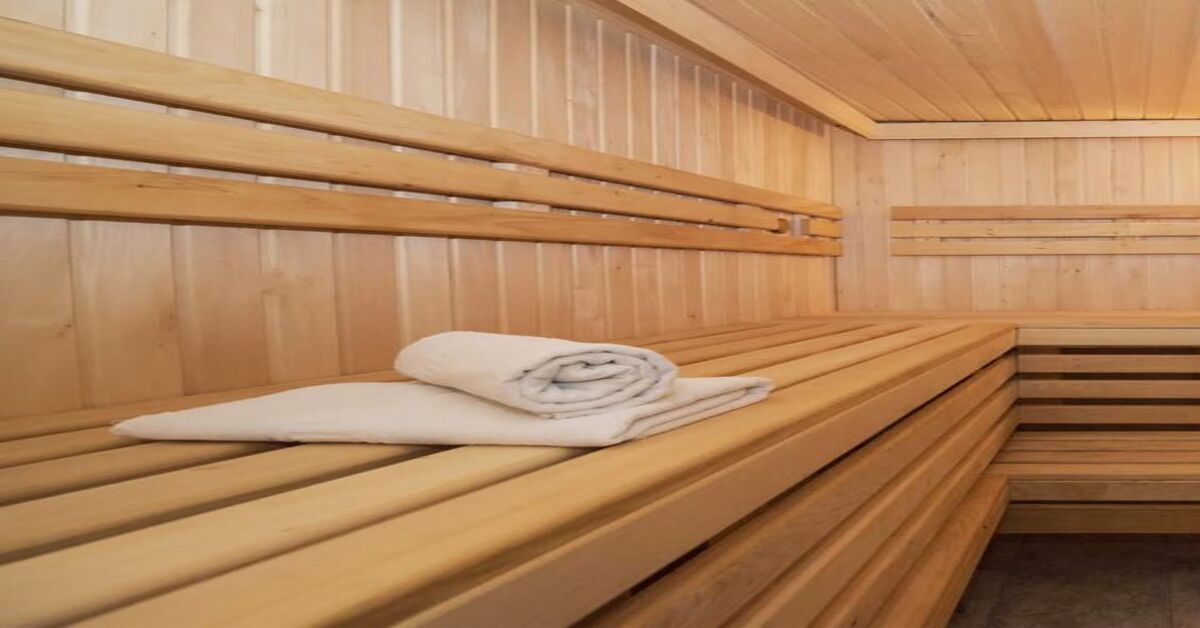Our sunasusa team research shows that steam rooms provide several health
advantages, such as relaxation, enhanced skin hydration, and increased circulation. They may, however, also have
disadvantages, such as the possibility of becoming overheated, dehydrated, or causing certain medical disorders. Using steam rooms sparingly and seeing
a doctor if you have any underlying medical conditions is important.
Steam rooms have been shown to improve circulation, clear sinus pollution, and help in
post-exercise muscle recovery. They also provide extra advantages, lessen stress, and help cleanse the skin.
Steam is produced by a water-filled generator in a heated enclosure to create a moist atmosphere in a sauna or
hot tub at a gym or spa. A steam room typically has a temperature between 110 and
120°F with a high humidity level.
What is a Steam Room?
Steam rooms are restricted, heated, and moist environments used for healing and relaxation. Even with brief use,
humidity and heat can have a substantial positive impact on circulation, assist relax muscles, and lower stress
levels. A steam room is usually a tiny, enclosed chamber with seats that is heated by a steam generator.
While some of these rooms are made of wood, materials without pores that can avoid high humidity levels, such as
tile, marble, or stone,
are typically used in their construction. Steam rooms typically have temperatures between 40 and 50 °C
and up to 100% humidity.
Steam room types
The materials and designs of steam rooms might be different:
- Solid Surface: Easily cleaned, long-lasting, and simple in style.
- The material: Large, bright, fashionable, and low maintenance.
- Wood: Made of softwoods that absorb steam and endure heat, such as eucalyptus and, cedar, it has a rustic, Swedish charm.
- Stone-Lined: An informal atmosphere with long-term stone finishes, frequently paired with
hydrotherapy
elements. - Ceramic Coating: Various colors and textures, including mosaics(tiles), can be customized.
Steam Room Benefits

Several health benefits can be obtained from steam rooms:
Enhances Circulation
Regularly visiting a steam room might improve heart function, especially in elderly people. The moist heat helps
in the expansion of small blood vessels, boosting the body’s ability to carry oxygen and blood overall. This
treatment can help restore damaged skin tissue, decrease blood pressure, and improve the heart.
Boosts Skin Health
The heat from steam rooms encourages sweating, which opens pores and purges the skin of dirt and dead cells. In
contrast to saunas, this procedure may help remove toxins that are hidden under the skin’s surface and help in
the treatment of acne.
Reduces Stress
The heat of a steam room causes endorphins to be set free, and endorphins are believed to reduce stress.
Moreover, it lessens the stress hormone cortisol, which makes users feel more refreshed and at ease.
Opens Lungs
The steam can relax the tissues, which in turn helps to facilitate breathing. Treating colds and clearing sinuses
may benefit from this.
Calorie Burn
Steam rooms can raise heart rates and help in calorie burning, they should be used alongside a suitable workout
routine. It is important to stay hydrated because the loss of water in a steam room is typically the cause of
any weight loss. While steam rooms don’t help people lose weight on their own, they can improve overall wellness
when used alongside a nutritious diet and regular workouts.
Promotes Post-Workout Recovery
Delayed onset muscle soreness (DOMS), a type of post-exercise muscle pain, may arise.
Using moist heat from a steam room can relax muscles and calm the nervous system, which can lessen discomfort
and maintain strength.
Improves Mental Wellness
By distracting attention from worry and excessive news consumption, heat-based treatments like steam rooms may
improve mental wellness. Using heat treatment promotes breath awareness and mindfulness, which can lead to
better sleep, less stress, and feeling happier via self-care.
Relaxes Stiff Joints
Using a steam room before exercise has the same benefits as a pre-workout warm-up in terms of increasing joint
mobility and decreasing stiffness. Wet heat may heal just as well as dry heat and even be applied more quickly.
COVID-19
It’s not a good idea to use a steam room if you have COVID-19, but the study is looking into how the mild heat
stress that comes from saunas, steam rooms, and hot springs may replicate fever and strengthen the body’s
defenses against viruses, including COVID-19. Heat therapy has been used traditionally to treat disorders, even
though there are currently no treatment suggestions for COVID-19.
Steam Room Risks

Although steam rooms have many benefits there are also certain issues that users need to be informed of. Because
steam rooms’ extreme heat might cause dehydration, it’s advised to keep well-hydrated before entering and to
spend no more than 10 minutes there.
The moisture promotes the growth of fungi and bacteria, which raises the risk of illnesses like athlete’s foot.
Using a towel and wearing sandals or shower shoes can help reduce this danger. For some people, such as the
following, steam rooms are not advised:
- People with extremely high or low blood pressure.
- Individuals affected by epilepsy.
- Pregnant people.
- Individuals suffering from heart diseases.
- Anyone using alcohol, Drugs tranquilizers, or medicines.
When using antibiotics or other drugs, it is usually advisable to stay out of hot places and UV rays.
Steam room vs. sauna
Saunas and steam rooms both have health benefits, but their heating systems are very different. Steam
rooms get their heat from steam produced by a boiling water generator, and a sauna uses dry heat,
usually from hot rocks or a burning fire. A damp, tropical atmosphere with temperatures ranging from 110
to 120°F and a humidity level between 95% and 100% can be found in steam rooms.
The thick, wet air produced by the high humidity feels good against your skin. Saunas, on the
other hand, are dry and have a desert-like atmosphere. Typically made of wood, they are heated to between
160 and 200°F and almost completely dry.
How to Use a Steam Room

Steam rooms provide a calming atmosphere for relaxing and a special mixture of health and relaxation benefits. To
optimize these benefits, follow these suggestions:
- Getting ready: If you are pregnant or suffer from any medical conditions, see a doctor.
Maintain proper hygiene to stop getting rid of viruses or bacteria. To stay relaxed and hydrated, wear
loose-fitting clothes and drink lots of water. - During Your Session: Relax on the benches by sitting or lying down, taking in the low
lighting. Drink water to stay hydrated. Keep your session short—no more than 15 to 20
minutes—to prevent dizziness or nausea from too much heat and humidity. - After Your Session: Continue drinking water to rehydrate while you slowly cool down.
Tips for Cleaning and
Maintenance
Steam rooms are long-lasting and hygienic when they are cleaned and maintained regularly.
- Everyday Cleaning: Space, scrape, disinfect, and sweep.
- Wood Care: Use chemicals that prevent dirt, stay away from water pressure and strong
sanitizer, and use flexible wood cures. To prevent wet suits on hardwood benches, make sure all surfaces are
completely dry and offer seat covers as a substitute.
Steam rooms can be medically beneficial when used carefully and with care, which also guarantees a safe and
enjoyable experience.
Can Steam Rooms Help in
Reducing Inflammation?

Most researchers conclude that thermal therapy, which includes steam room heat, can help lower
general inflammation. Considering that chronic inflammatory illnesses represent a substantial global health
concern, this benefit is significant. Many major problems, including cancer, heart disease, stroke, obesity,
diabetes, and lung and respiratory diseases are linked with long-term inflammation.
Around 60% of Americans have at least one chronic condition, and 12% have five or more, according to a Research
Institute study that showed how common chronic illnesses are in the country. Three out of every five deaths
worldwide are attributed to chronic inflammatory disorders.
According to one study, frequent sauna use reduced levels of C-reactivity protein (CRP), an
essential sign of systemic inflammation. Steam rooms may have benefits similar to those of saunas, even though
this study focused on saunas. This is because of the principle of heat therapy.
Additional research suggests that heat therapy, which reduces inflammation, may be useful for people who are
unable to exercise regularly because of physical or mental impairments. More frequent sauna use was linked to
lower CRP levels, according to a different study including over 2,000 Finnish men. This suggests that heat
therapy has dose-related benefits, with more regular use within acceptable limits potentially having higher
health benefits.
Is the steam room good for your
skin?
Using a steam room can help your skin. The moist, warm air opens pores, making it easier to remove pollutants,
oil, and particles, which may result in a brighter complexion. Heat-induced enhanced circulation can help
support healthy skin by supplying more nutrients and oxygen. But, it’s crucial to drink sufficient of water and
refrain from excessive use, as too much absorption may result in dryness or irritation.
Does steam glow skin?
By increasing circulation and opening pores, helping in the removal of pollutants, steam can help create a
complexion that looks healthier. This procedure can make the skin appear healthier and more attractive. But the
“Glow” is usually fleeting and dependent on several variables, such as your skin type and
general skincare regimen. Frequent application, along with appropriate skin care and hydration, helps bring out
the skin’s natural brightness.
Tips for Using the Gym’s Steam
Rooms

The following advice will help you get the most out of your gym’s steam room:
- Prevent Dehydration: Drink plenty of water both before and after your workout to recover
the fluids lost through sweat. To avoid dehydration and promote better digestion, avoid drinking and eating
heavy meals for at least an hour before steaming. - Appropriate Clothing: Put on loose cotton clothes or a towel. Avoid clothing made of PVC and anything made of metal that can catch fire.
- Take a shower before: After properly cleaning, wash your body with natural soap. This
guarantees that nothing will obstruct the benefits of steam therapy for your skin. - Cooldown Routine: To enjoy the full advantages of your session, cool down with natural tea,
meditate, exercise, drink water, and take a shower. - Keep an eye on your time: Start with 5–10 minutes and work your way up to
a maximum of 15 to 20 minutes, to develop patience. If anything doesn’t feel right, leave.
Why Gym Owners Like Steam
Rooms?
Steam rooms are valued by gym operators for their market share and wellness benefits. Steam rooms improve
workouts and increase the gym’s attraction and dependence. Steam treatment is suggested by physical therapists
because it helps to relax muscles, relieve tension, and calm nerves. Steam rooms promote a feeling of community,
which increases loyalty to clients and increases business performance. It benefits both gym owners and visitors.
Overview
Improved joint flexibility, increased circulation, healthier skin, and nose relief are just a few of the health
effects that steam rooms offer. They relax muscles and comfort nerves by using high
temperatures and humidity. However, there are risks connected to steam rooms, like the possibility of bacterial
and fungal growth in warm, humid environments.
Wearing the proper shoes and drinking enough water is essential. Saunas and steam rooms should
not be visited by people who are taking specific drugs. If using a steam room causes you any health problems,
see a doctor first.







